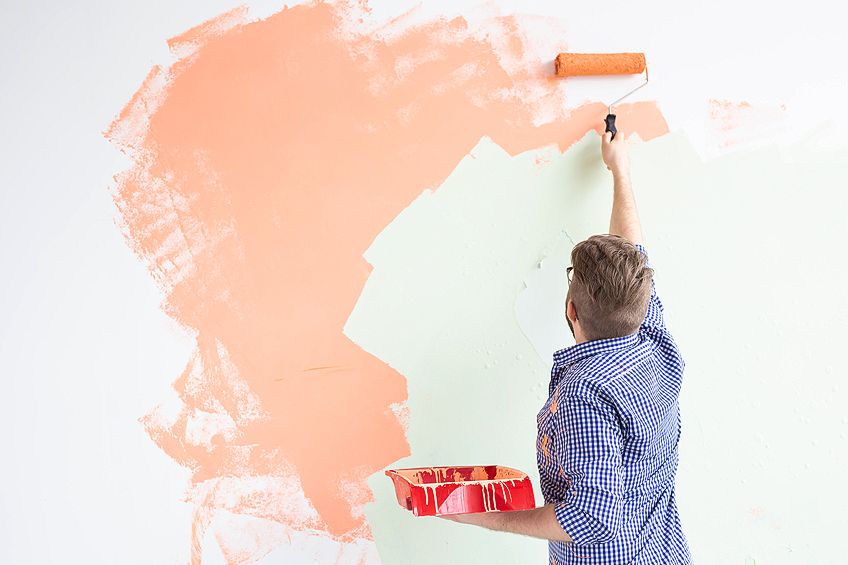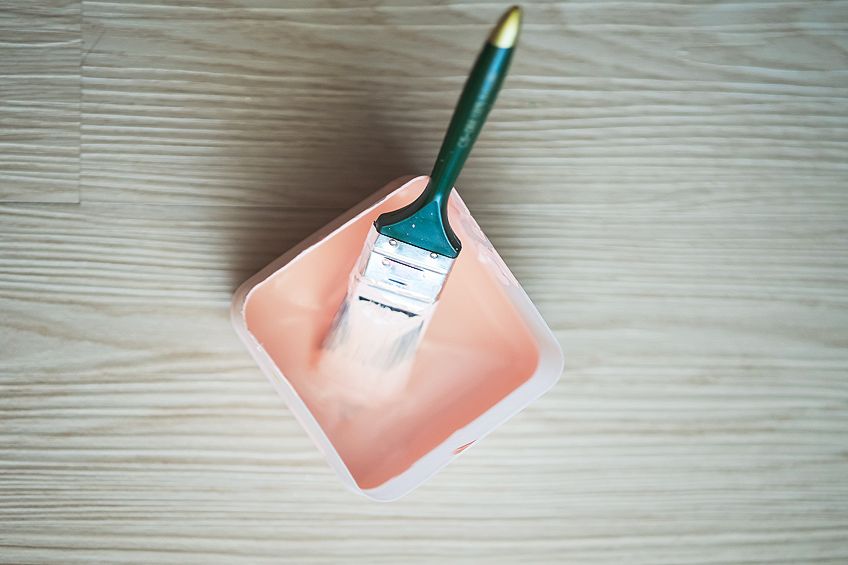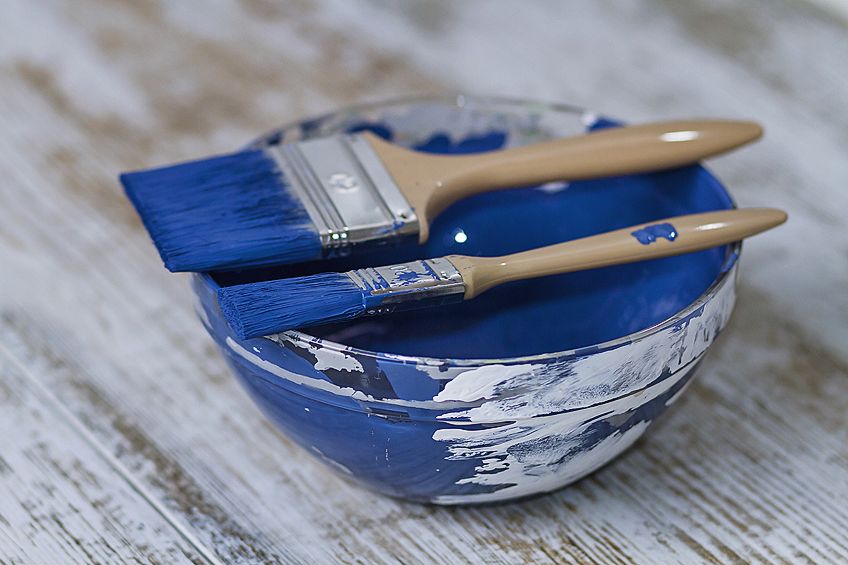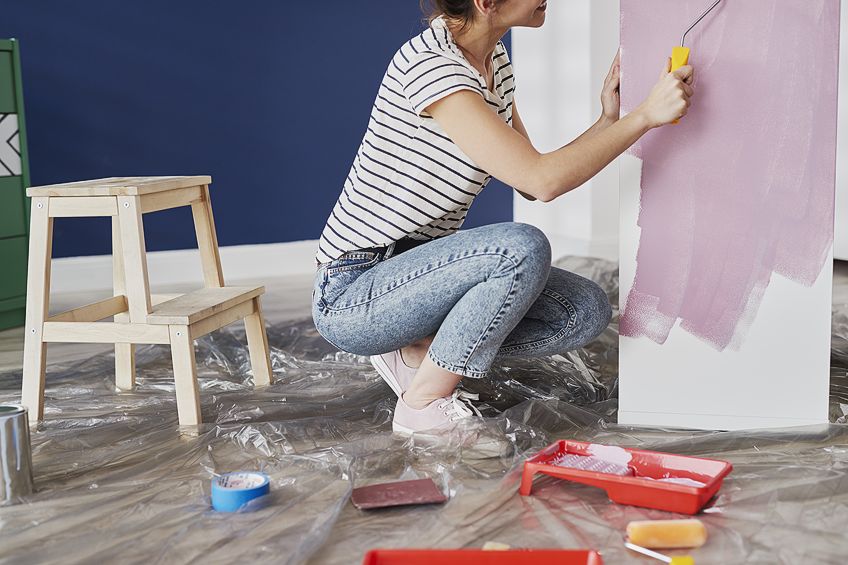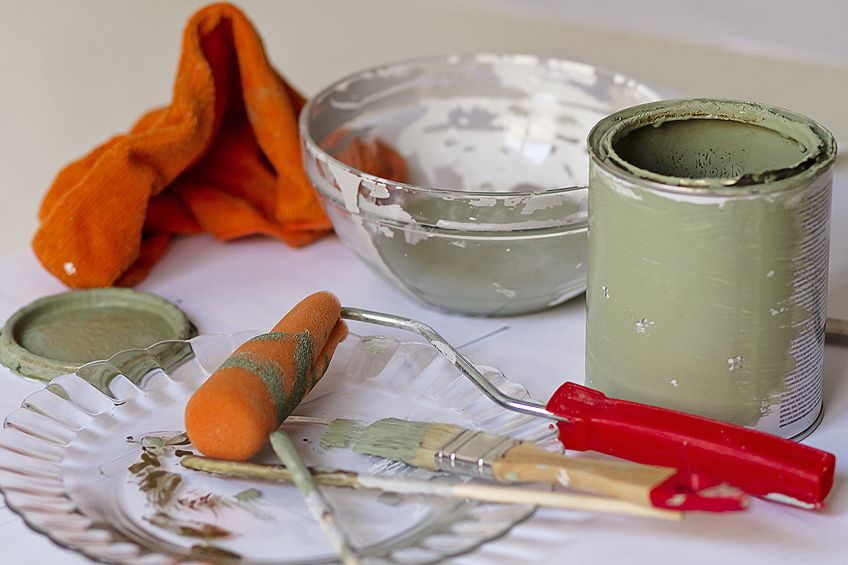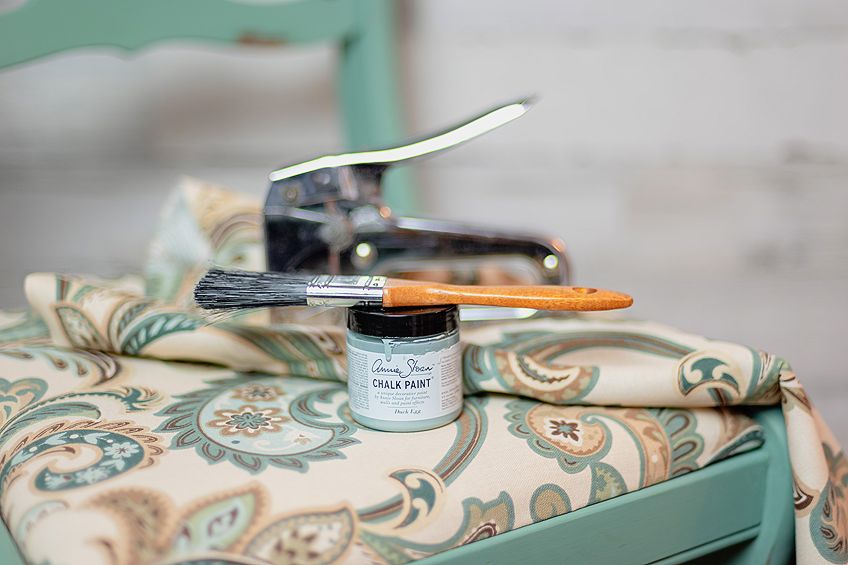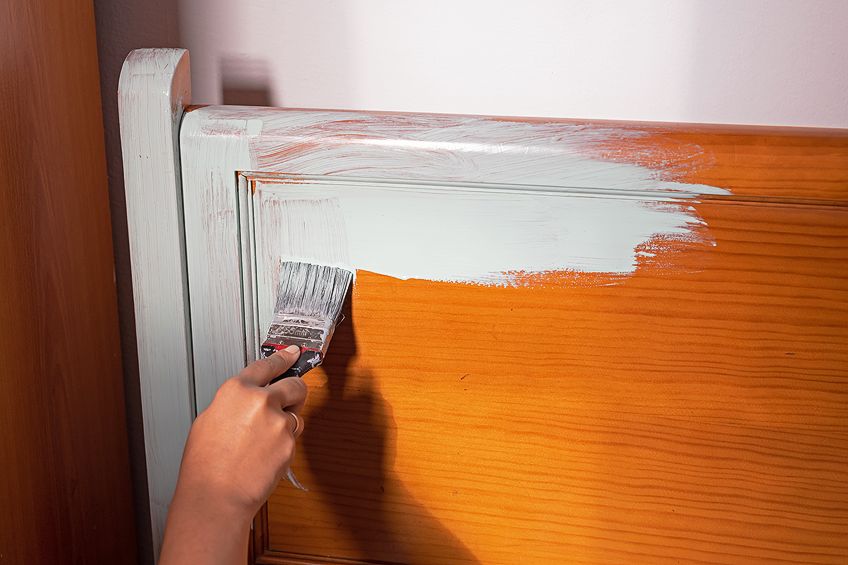Milk Paint vs Chalk Paint – Looking at Chalk- and Milk-Based Paints
This post may contain affiliate links. We may earn a small commission from purchases made through them, at no additional cost to you. You help to support resin-expert.com
When it comes to milk paint vs chalk paint, the difference between the two may seem a bit confusing, particularly if this is your first time painting with this type of medium. This might be a difficult decision because both of these paints offer similar properties and results. You can also use these paints for smaller projects like picture frames or refurbishing an old piece of furniture. The main difference between chalk paint and milk paint comes from the ingredients in each, as well as the cost of both types of paint. To get a clearer picture of milk paint vs chalk paint, let us take a close look at both.
Table of Contents
What Is Milk Paint?
Milk paints have been around for many years and contain basic ingredients like milk protein (also known as casein), clay, limestone, and color pigments. Traditional milk paints can be purchased as a powder, which then need to be mixed with water. However, there are also pre-mixed milk paint options available that will save you time as well as money.
Just note that some of the commercial products may say “milk paint,” but these products have been enhanced and mainly imitate the finish of traditional milk paints.
The most beneficial thing regarding milk paints is that they are water-based and safe to use. Milk-based paint also has no volatile organic compounds (VOCs). This environmentally friendly milk-based paint can also be used on different surfaces, from ceilings to furniture, walls, jars, and other decorative pieces. The effect, once painted, is great for a whitewash look and getting that rustic design or antique aesthetic. You can easily achieve this by sanding the paint lightly in places once it has dried.
Well-liked milk paint brands include:
- The Old Fashioned Milk Paint Company
- Miss Mustard Seed Milk Paint
- The Real Milk Paint Company
- Rust-Oleum
- FolkArt
- General Finishes Milk Paint
Milk paints provide a velvety-matte finish that can easily be distressed. The finish is long-lasting, and the paint can adhere to most surfaces. Porous surfaces or raw wood are great to work with and do not require a primer before painting. When applied to other non-porous surfaces, however, a bonding agent should be included. Once the milk paint powder has been mixed, it is best to use the paint within 24 hours, as it has a relatively short shelf-life.
Pros and Cons of Milk Paints
Milk paints are a popular choice when it comes to wood furniture, especially if you want a more unique, rustic look. Even though milk paints offer many advantages, there are also a few disadvantages that may cause some people to prefer chalk paint or other paint alternatives.
PROS
- The powder can last for years, provided you only mix what you need
- Gives you a beautifully smooth, matte, and rustic finish
- Achieves that chipped and distressed look
- Less expensive than chalk paint – a small amount goes a long way
- Non-toxic, no harsh odors, and no VOCs
- Available in many different colors
- Dries fast
- Does not need a primer
- Cleans up easily with a little soapy water
CONS
- You need to mix it properly to prevent lumps
- Short shelf-life when mixed
- Can crack over time unless bonding agent has been added, especially over non-porous surfaces
- Brushstrokes may appear in thin layers
What Is Chalk Paint?
Chalk paint is a popular paint that dries quickly and adheres well to different surfaces. The paint consists of calcium carbonate, chalk pigments, and talc. The name “chalk paint” was coined by Annie Sloan in the 1990s when she developed the product. Today, there are quite a few other brands also available. You only need a few coats to give you a matte finish that has that sought-after distressed look.
A matte finish is a flat look that has no shine to it.
Where milk paint needs to be mixed, chalk paint needs no mixing and can be used immediately. The chalk paint comes in various colors and tends to cost a little more than the milk paint. You can apply chalk paint to most surfaces, including furniture, ceilings, walls, and other decorative pieces.
Well-liked brands include:
- Annie Sloan Chalk Paint
- Rust-Oleum Chalked Paint
- Retique It
- The Spruce by KILZ
- FolkArt
Even though you get different chalk paint colors, it is difficult to customize the paint to get a specific color. The chalk paint is thicker and will cover the surface more, leaving an even, matte finish. Chalk paint is also odor-free, fast-drying, and can safely be used indoors. You can even make your own chalk paint – check out our tutorial on how to make chalk paint.
Pros and Cons of Chalk Paint
Chalk paint seems to be a more popular choice when it comes to painting furniture and coffee tables, as it is more convenient to use. As with everything, there are also a few disadvantages when it comes to using chalk paints. Let us have a look at both the pros and cons of this medium to see if this is the best choice for your painting project.
PROS
- Thicker than milk paint and requires fewer coats
- No primer is needed
- Easy to use and apply, even over a surface that already has an existing finish
- Will not leave brush strokes behind; you can also use a roller
- Longer shelf-life
- No odor
- Dries quickly
CONS
- Thicker layers can hide the underlying wood texture and create uneven layers
- Not easy to create customized colors
- Some brands may contain toxic ingredients – it is always recommended that you read product labels
- More expensive than milk paint
- Requires a topcoat for added protection – usually a soft wax, which needs to be applied properly
The Difference Between Chalk Paint and Milk Paint
When looking at milk paint vs chalk paint, you will notice that both are water-based, have little to no odor, and dry quite fast. As you can see, both options provide quite a few advantages, and are very often the better option when compared to latex or oil-based paints.
| Chalk Paint | Milk Paint | |
| Finish | Matte, chalky, and even finish; more control over creating a distressed look | Velvet-like matte finish; distresses and flakes more easily |
| Surfaces | Works on most surfaces including metal, concrete, terracotta, wood, fabric, plastic, leather, and laminate | Best on porous surfaces like wood, but also works on glass, metal, masonry, plastic, drywall, plaster, and most other surfaces |
| Cost | More expensive than milk paint | Cheaper than chalk paint |
| Consistency | Thicker than milk paint – requires only one or two coats | Thinner – may require three or more coats, depending on the look you want |
| Primer | No primer needed | No primer needed |
| Ingredients | Calcium carbonate, talc, and chalk pigments | Milk protein (casein), as well as clay, limestone, and color pigments |
| Product | Comes in a tin; no mixing required | Comes in a powder form that you have to mix with water; there are also pre-mixed options |
| Colors | Not easy to create your own colors | Easily mix the amount you need and create new colors |
Application of Milk Paint vs Chalk
Milk paints and chalk paints are both easy to use as they tend to adhere to most surfaces. You can also create a smoother, more matte finish using chalk paint, or a simple, distressed or chipped look by applying milk paint. However, you can also use chalk paint to create a distressed look by sanding it in random areas.
The number of paint coats and different colors you use will also produce different effects, so you can experiment to achieve the finish you are looking for.
Applying Milk-Based Paint
As mentioned, milk paints come in powder form, and you need to mix the powder in equal amounts with water in order to use the paint. For a somewhat flakey and chipped look, you can then apply the paint as is. Simply add a bonding agent if you want a smoother, more even finish, or if you are working on a non-porous surface.
Mixing the milk paints by hand may produce some lumps. So, a better option would be to use a drill that comes with a mixing attachment. This will make sure that all the powder gets mixed properly, so that the milk paint appears smooth with a slightly watery consistency. The consistency should not be too thin, nor overly thick – more like a milkshake.
Allow the mixed paint to sit for at least ten minutes to half an hour so that the color pigments can dissolve. You can then use the milk paint straight away and, since it adheres quite well, no primer is needed. However, we do suggest that you sand the surface lightly with a 150- to 220-grit paper for an even more distressed look. If you want even more texture, you can do a heavier sand and then wipe down the surface to remove any dust.
Take the milk paint and use a natural bristle brush to apply it to your surface. Some also like to use a roller, while others like to use a sprayer. Leave the milk paint to dry for about 30 minutes, after which time you can then apply a second coat if you want. Get rid of any discernable chips with a putty knife and then use a high-grit sandpaper of 320- to 400-grit. When sanding, move in one direction, using long and even strokes.
Milk paint is durable, so if it is applied to a surface that is not used often, you can get away without applying a sealant coat. On surfaces that might be exposed to wear and tear, applying a sealer is a good idea. You can use natural wax, oil, or polyurethane to protect the surface.
Applying Chalk Paint
Chalk paint, like milk paints, can be used on different surfaces, although in many cases it is used to create unique furniture items. As with milk paints, there is little preparation required, and the paints are easy to apply. Chalk paints are even easier, as you do not have to mix anything to start – simply dip in your brush and paint.
You do not even have to remove any previous finish before painting, but making sure that the wood surface is clean and dry remains important. To clean, some soap and water will do the job nicely. Also, chalk paint is easy to clean up, so if you mess a little, it is no problem. You can also place your furniture item on some newspaper or plastic to keep things clean.
Remove any hardware, labels, or stickers, and wipe off any dirt or dust with a damp cloth. Just remember to wait for the wood to dry completely before painting. If you do find any rough patches, you can smooth these out with a 220-grit piece of sandpaper.
Again, be sure to clean any dust away. Areas you do not want paint on can be taped off with some painter’s tape.
Pour some paint out and start painting. You do not have to be careful about which direction you paint in, as you simply need cover the surface area with the paintbrush. You can leave it at one coat, but generally, a second coat is needed. Once you have painted the first coat, leave it to dry for 30 minutes. This will create a more solid look to your finish.
To create a distressed look, you will need to use a fine-grit sandpaper. Coarse sandpaper will be too much, as you do not want to sand through to the wood surface. Where you choose to sand the surface is up to you, but if you do sand too much of the surface, you can repaint and start over. Clear any dust off with a clean, dampened cloth and then, once dry, you can apply a sealer.
Many of the chalk paint brands will sell a wax sealer along with their other products. Apply a clear wax layer in sections over your painted item, using a wax brush. These brushes are usually rounded and have a slightly heavier handle. Once the soft wax has been applied in a certain section with a brush, take a lint-free cotton cloth and wipe over the area to remove any excess. Follow the same procedure as you cover the entire surface area, one section at a time.
You can also apply the wax with a clean, dry, lint-free cotton cloth and, once you have done a section, wipe the excess off with another piece of clean, dry, land int-free cloth. You might need to have a few clean rags available for this, as the wax can build up and you will need to swap it out frequently.
You might want to consider doing the surface over a second time with the wax, just to make sure everything has been covered. Allow the wax to dry and if the item is going to be used often, it is best to leave it to sit for about two to three weeks before using it. This will make sure the wax has dried properly. This process is for wood items that remain indoors, as the wax will not dry outside properly.
Chalk paint can also work with layering different colors and then create a distressed look. Paint a base coat of paint and then apply a second layer that is a different color or shade. Once the paint has dried, you can then sand down the topcoat to reveal the different colors beneath.
Milk Paint vs Chalk Paint Tips
Milk paints are not necessarily better than chalk paints, as it all depends on what you want to achieve. Both are easy to work with and require very little surface preparation, which is what makes these paints a great choice for those who love do-it-yourself projects.
Tips on Using Milk-Based Paint
- Consider what you want to achieve, such as whether or not you will need a bonding agent for your type of surface. These decisions will help to guide you through the painting process more effortlessly.
- Figure out the correct mixing ratio. In general, it is one part water to one part powder, but this may change if you want the consistency a little runnier or thicker.
- Only make what you need for your current project, as milk paints have a short shelf-life.
- Once you have mixed the powder and water, leave it to stand for about 20 minutes before painting. If it is a big project, stir it again every 20 minutes while painting.
Even if there is no preparation or priming needed, it is always a good idea to clean the surface of any dust and dirt.
- For the best results, porous surfaces like wood work best when sanded and stripped of any old finishes. A bit of sanding will create texture and provide a surface that the milk paint can adhere to much more effectively.
- Remember that you need to include a bonding agent if you are going to paint over another finish or non-porous surface.
- A protective topcoat is always a good idea for items that need extra protection.
- Make sure that you mix the paint, stir, and then strain it before using it in a paint sprayer.
- You can use a paintbrush, a roller, or a spray to apply the milk paint.
- Consider a wax sealant for all projects to increase the longevity of your paint. Apply it 30 minutes after the paint has dried for a finish that lasts.
Tips on Using Chalk Paint
- No surface preparation is needed – simply paint, even if it is over an existing finish.
- Use criss-cross or V-shaped brush strokes for the best results. You do not have to follow the wood grain.
- Applying a wax sealant is important. You can choose a clear wax or a dark wax, which can accent the furniture nicely, as it collects in areas like corners. Use a soft, lint-free cotton cloth to apply the wax and then wipe it off with a second cloth.
- Cheap bristle brushes or sponge brushes might not be the best choice. You do get a brush specifically for chalk paint, although a good latex brush should also be fine.
When distressing, consider where a piece of furniture would wear. For example, knobs, edges, and a few other random areas.
- Do not overdo the distress effect. You do not want to reach the wood underneath, so only apply a slightly distressed look.
- Begin painting in a less conspicuous area if you want to test out the paint first.
- Paint in sections; for example, paint one side and then move on to the other side.
- Always remember to clean your brush with some soapy water and take care of it so that it will last you a long time.
- Once the distressing has been done, wipe away the dust.
- To create more depth, consider layering two different colors and then sand for a distressed look
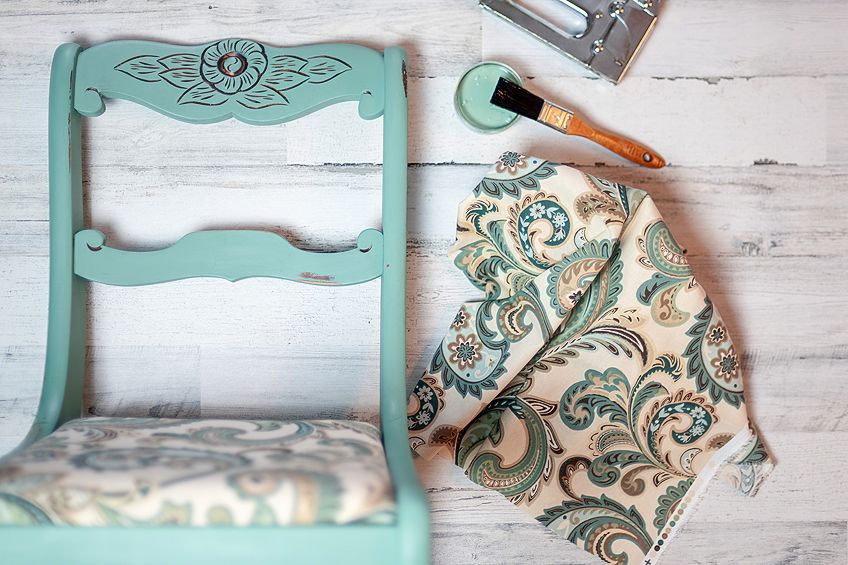
Frequently Asked Questions
What Is Milk Paint?
Traditional milk paints come in a powder form that you have to mix with water, and contain a milk protein known as casein. The paint also contains clay, limestone, and color pigments, and is a great way to create a distressed or chipped look for furniture.
Is Sanding Required Before Applying Milk Paints?
If you want the best results, sanding is a good idea. This cleans the surface and adds texture so that the paint can adhere better to the wood surface. You will need to add a bonding agent for non-porous surfaces like metal or if you want to achieve a more even finish on the wood.
Milk Paint vs Chalk Paint: Which Is Best for Distressing Wood?
Both paints can be used to distress wood, however, milk paint does this far more effectively and naturally over time. Milk paints can achieve a great vintage furniture look quickly and easily.
Is It Necessary to Sand When Applying Chalk Paint?
No, sanding is not necessary when using chalk paint, as it adheres to many surfaces like wood quite well. All you need to do is make sure that the surface is clean and dry. You also do not need to apply a primer before painting, making this paint great for hobbyists and crafters.
Is Sanding Necessary Between Coats When Using Milk Paints?
When wanting to achieve a smoother look, wait two to four hours for each coat to dry and then sand using a 320- to 400-grit sandpaper. The sanding is not needed for better adhesion, but provides a smoother finish.
Can Milk Paint Be Applied Over Another Finish?
Yes, you can apply milk paint over a stain, paint, or other finish, but you will have to include a bonding agent for better adhesion to the surface.
Do You Need to Apply Wax Over Milk Paint?
Once you have painted your furniture piece, the final step of applying wax is recommended. The wax is not necessary, although it does provide more protection and gives the surface a nice, brilliant finish.
Can You Use Chalk Paint to Cover Walls?
Yes, you can use chalk paint to cover walls, and it is a great non-toxic option. The paint will provide a unique textured and matte look. When applying, you can use a roller, although a larger brush will use less paint.


